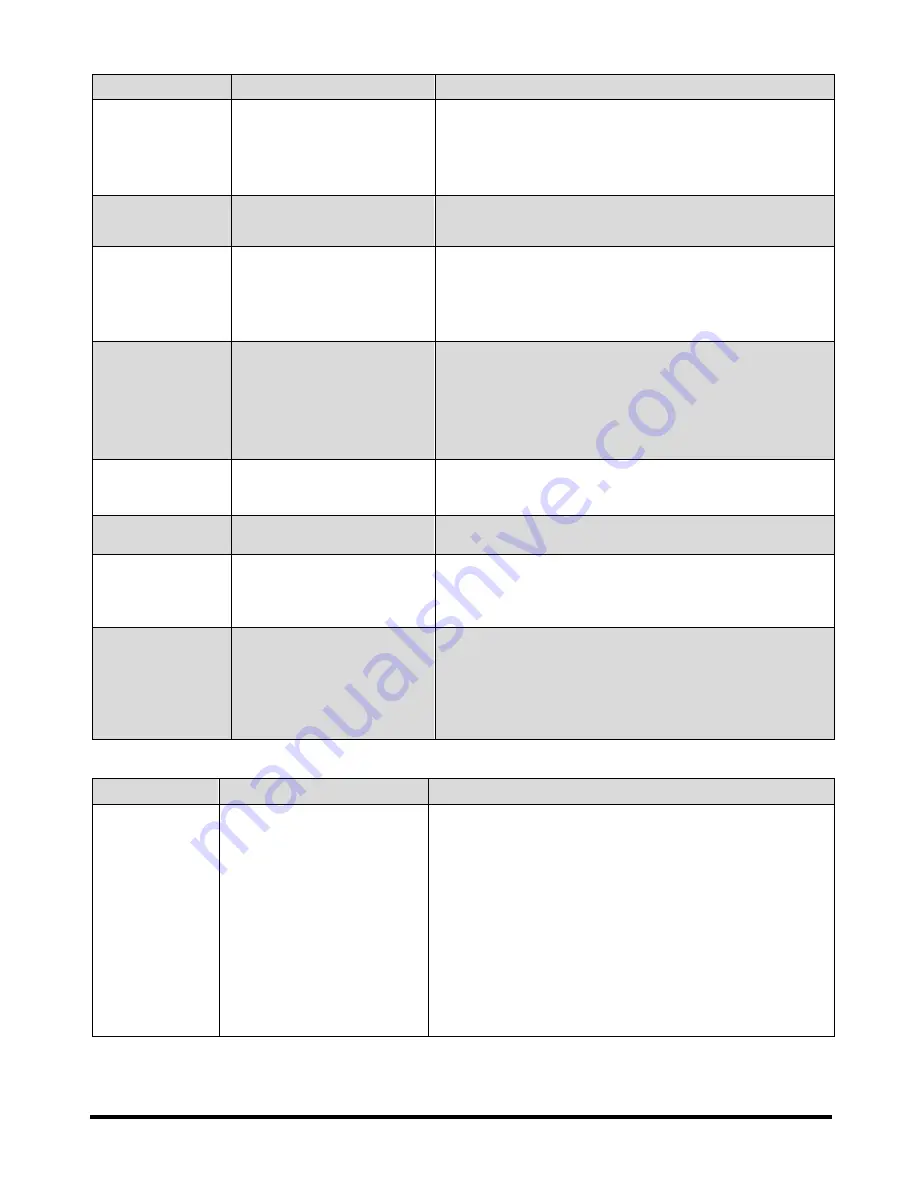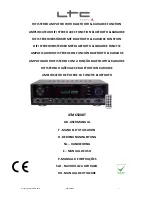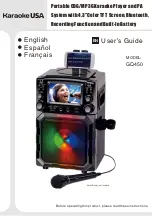
V1.0
180 MULTI-PROCESS MIG-ARC-TIG WELDER
8611311
Visit www.princessauto.com for more information
29
MIG WELDING
PROBLEM(S)
POSSIBLE CAUSE(S)
SUGGESTED SOLUTION(S)
Porosity − small
cavities or holes
resulting from gas
pockets in weld
metal.
1. Arc length too long
2. Workpiece dirty,
contaminated or moisture
3. Damp electrodes
1. Shorten the arc length.
2. Remove moisture and materials like paint, grease, oil
and dirt, including mill scale from base metal.
3. Use only dry electrodes.
Excessive Spatter. 1. Amperage too high
2. Arc length too long
1. Decrease the amperage or choose a larger electrode.
2. Shorten the arc length.
Weld sits on top,
lack of fusion.
1. Insufficient heat input.
2. Workpiece dirty,
contaminated or
moisture.
3. Poor welding technique.
1. Increase the amperage or choose a larger electrode.
2. Remove moisture and materials like paint, grease, oil
and dirt, including mill scale from base metal.
3. Use the correct welding technique or seek
assistance for the correct technique.
Lack of
penetration.
1. Insufficient heat input.
2. Poor welding technique.
3. Poor joint preparation.
1. Increase the amperage or choose a larger electrode.
2. Use the correct welding technique or seek
assistance for the correct technique.
3. Check the joint design and fit up, make sure the
material is not too thick. Seek assistance for the
correct joint design and fit up.
Excessive
penetration - burn
through.
1. Excessive heat input.
2. Incorrect travel speed.
1. Reduce the amperage or use a smaller electrode.
2. Try increasing the weld travel speed.
Uneven weld
appearance.
Unsteady hand, wavering
hand.
Use two hands where possible to steady up, practice
your technique.
Electrode welds
with different or
unusual arc
characteristic.
Incorrect polarity.
Change the polarity, check the electrode manufacturer
for correct polarity.
Distortion −
movement of base
metal during
welding.
1. Excessive heat input.
2. Poor welding technique.
3. Poor joint preparation
and or joint design.
1. Reduce the amperage or use a smaller electrode.
2. Use the correct welding technique or seek assistance
for the correct technique.
3. Check the joint design and fit up, make sure the material is
not too thick. Seek assistance for the correct joint design
and fit up.
PROBLEM(S)
POSSIBLE CAUSE(S)
SUGGESTED SOLUTION(S)
Excessive Spatter 1. Wire feed speed set too
high.
2. Voltage too high.
3. Wrong polarity set.
4. Stick out too long.
5. Contaminated base metal.
6. Contaminated MIG wire.
7. Inadequate gas flow or too
much gas flow.
1. Select lower wire feed speed.
2. Select a lower voltage setting.
3. Select the correct polarity for the wire being used - see
machine setup guide.
4. Bring the torch closer to the work.
5. Remove materials like paint, grease, oil and dirt, including
mill scale from base metal.
6. Use clean dry rust free wire. Do not lubricate the wire with
oil, grease etc.
7. Check the gas is connected, check hoses, gas valve and
torch are not restricted. Set the gas flow between 21 to 30
CFH flow rate. Check hoses and fittings for holes, leaks
etc. Protect the welding zone from wind and drafts.
















































